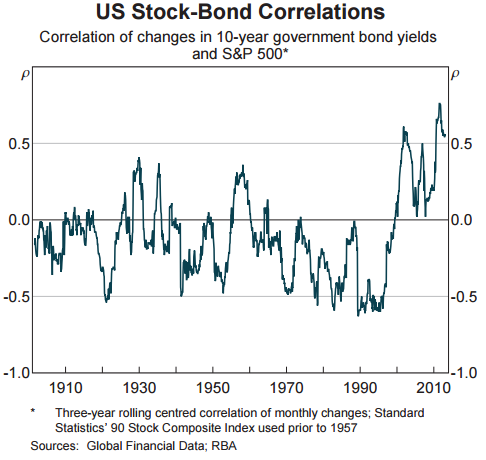How to manage a pension fund investment portfolio in economic uncertain times and shifting financial markets? Let's try to answer this question from a more practical point of view instead of a pure scientific approach......
Historical Performance
First of all we take a look at the historical (1993-2014) yearly returns of both pension funds and try to figure what n-year moving averages results in a stable and mostly non-negative yearly performance.
Historical Performance
Let's take a look at the performance of two large and leading Dutch pension funds
First of all we take a look at the historical (1993-2014) yearly returns of both pension funds and try to figure what n-year moving averages results in a stable and mostly non-negative yearly performance.
Smoothing Returns
If our goal is to 'smooth' returns to pension fund members and to prevent negative returns as much as possible, a '3-year moving average return approach' as basis for sharing returns to pension fund members, could be a practical start.
In this approach, a single maximum cut of around 3.3% is largely compensated by the returns in other years as the next chart of '3 Year Backward moving Average Yearly Return' shows:
Of course if we want to protect pension members also against systemic risk and crises, an additional investment reserve of around 15%-20% would be necessary.
The next slide gives an impression of the effects of a 10 year moving average approach. I'll leave the conclusions up to the readers. of this blog.
Main conclusion is that the analysed pension funds ABP and PFZW are able to generate a relative stable overall portfolio return over time. They manage to do so, despite the fact that their liabilities yearly fluctuate as a result of the fact that they have to be discounted by a risk-free rate.
Managing Volatility instead of Confidence Levels
A strategy based on managing the funding ratio of a pension fund given a certain confidence level and given the actual method of risk-free discounting of liabilities, is doomed to fail in a low interest environment. Discussions about confidence levels are also a waste of time, as long time confidence - at any confidence level - eventually will turn out to be an illusion.
As long as pension funds are able to demonstrate that that they are able to manage and control the volatility of their assets within chosen limits (risk attitude 1; e.g. 10%) and within a chosen time horizon (risk attitude 2; e.g. 20 years) , they will be able to fulfill their pension obligations, or to timely adapt their chosen risk-return strategy to structural market changes.
How to curb volatility?
Managing the volatility of an pension fund investment portfolio within a certain risk attitude is one of the greatest challenges of a pension fund board.
In short, the traditional instruments to curb volatility are:
- Diversification
With the help of diversification the asset mix of a pension fund can be tuned to optimize long term risk-return in relatively 'normal' market circumstances.
- Capital Requirements & Management
By defining and maintaining a well quantitative risk-based capital and investment reserve policy, a relatively smooth yearly return available for pension fund members can be achieved in a systematical risk environment.
- Economic Scenarios
By studying portfolio outcomes under different economic scenarios, a short term 'best fitting' near future volatility asset strategy can be developed.
- Trigger points
By defining asset portfolio actions that will 'fire' once particular trigger points of specific asset classes are met, all measures based on 'damage control' are in place.
In case of crises, like the current Greece crisis, agent based models, also called behavioral models, can help to manage systematic volatility.
Behavioral Asset Management
A way to minimize systemic volatility in an investment portfolio is to apply new 'Behavioral Economic Stress Test' models. These kind of tools, as provided y a FinTech50 2015 company called Symetrics, enable pension boards and investment managers to model and to anticipate crises.
More is explained in the next short presentation "The value of economic scenarios from a risk perspective" by Jos Berkemeijer, one of the four managing partners of Symetrics.
Used Links
- Agent based Models
- Behavioral Models by Symetrics
- Spreadsheet wit data used in this blog
- Presentation: The value of economic scenarios from a risk perspective

















